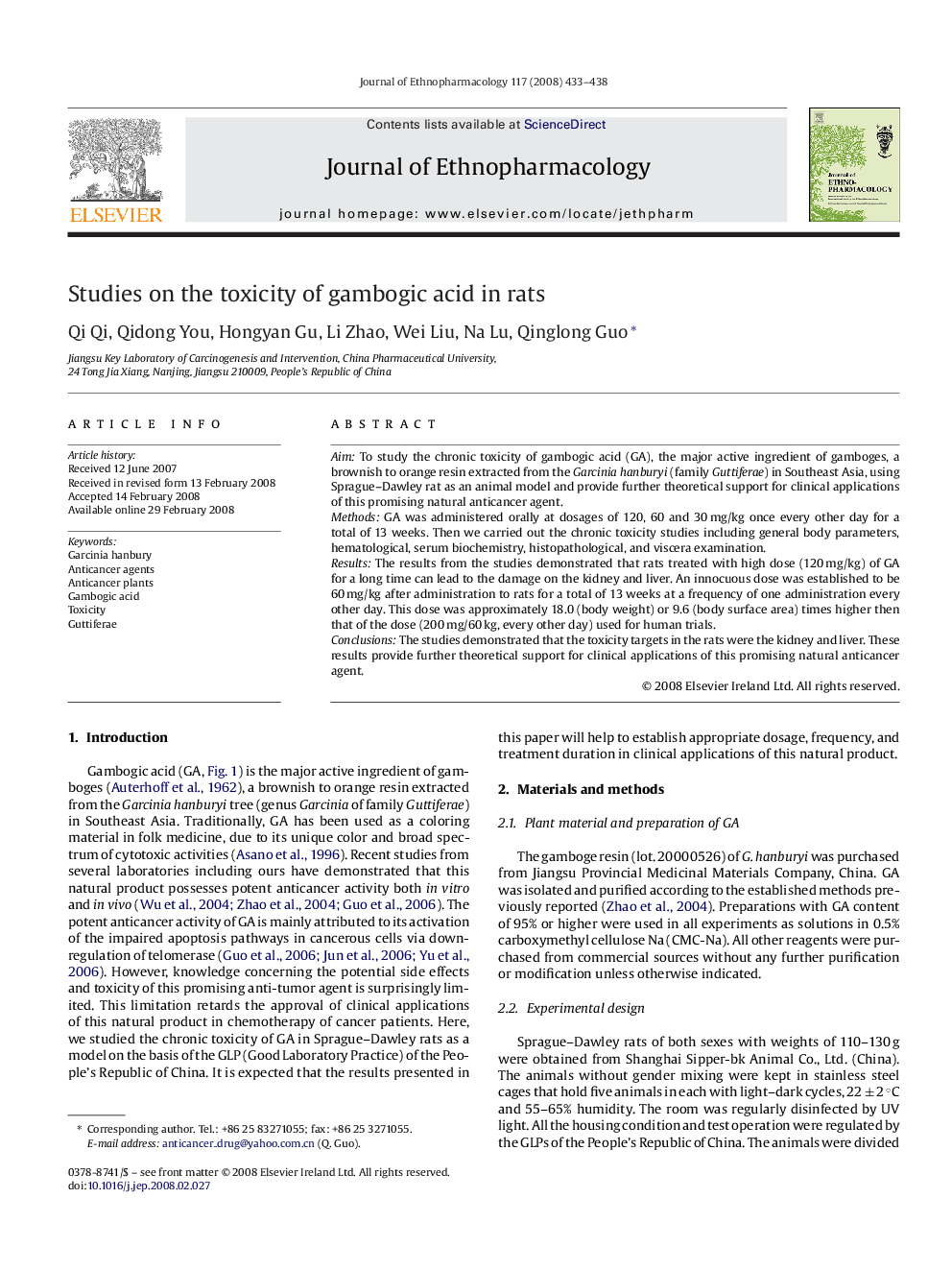| Article ID | Journal | Published Year | Pages | File Type |
|---|---|---|---|---|
| 2547037 | Journal of Ethnopharmacology | 2008 | 6 Pages |
AimTo study the chronic toxicity of gambogic acid (GA), the major active ingredient of gamboges, a brownish to orange resin extracted from the Garcinia hanburyi (family Guttiferae) in Southeast Asia, using Sprague–Dawley rat as an animal model and provide further theoretical support for clinical applications of this promising natural anticancer agent.MethodsGA was administered orally at dosages of 120, 60 and 30 mg/kg once every other day for a total of 13 weeks. Then we carried out the chronic toxicity studies including general body parameters, hematological, serum biochemistry, histopathological, and viscera examination.ResultsThe results from the studies demonstrated that rats treated with high dose (120 mg/kg) of GA for a long time can lead to the damage on the kidney and liver. An innocuous dose was established to be 60 mg/kg after administration to rats for a total of 13 weeks at a frequency of one administration every other day. This dose was approximately 18.0 (body weight) or 9.6 (body surface area) times higher then that of the dose (200 mg/60 kg, every other day) used for human trials.ConclusionsThe studies demonstrated that the toxicity targets in the rats were the kidney and liver. These results provide further theoretical support for clinical applications of this promising natural anticancer agent.
